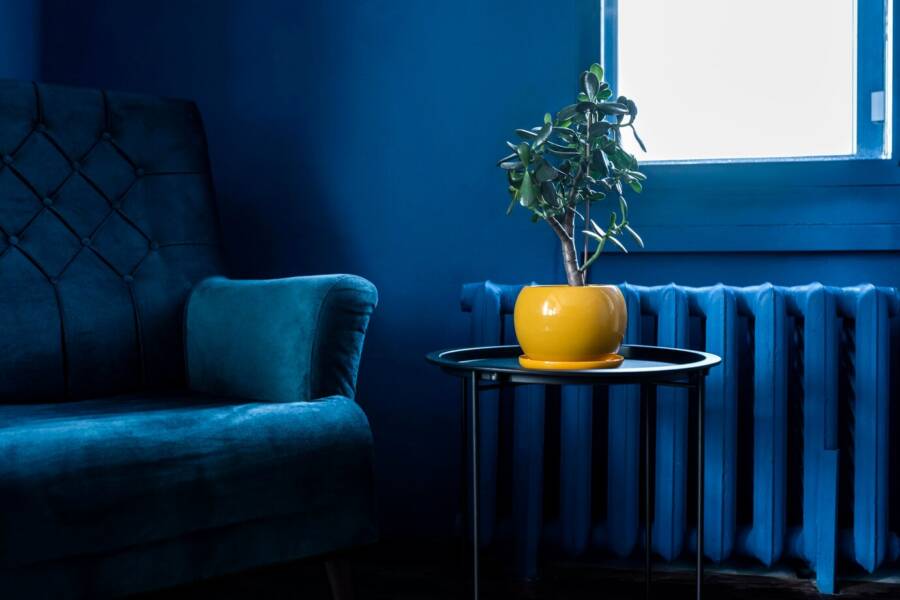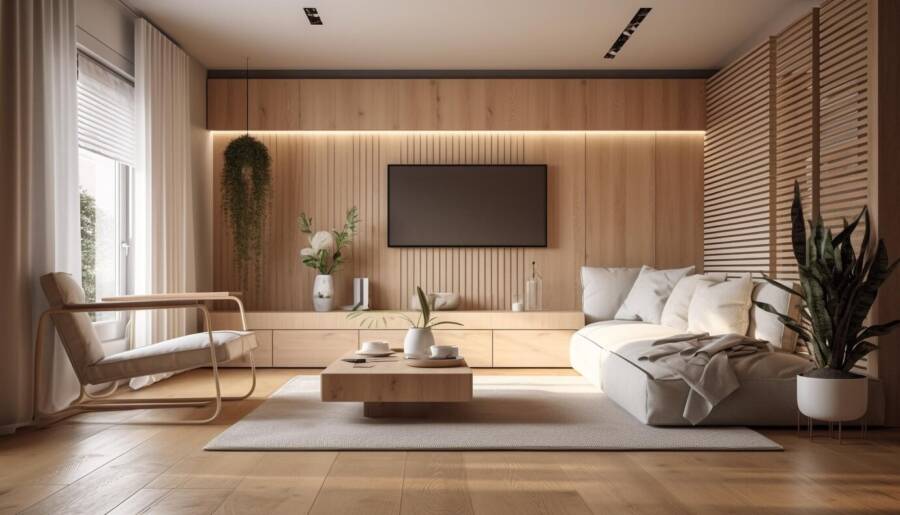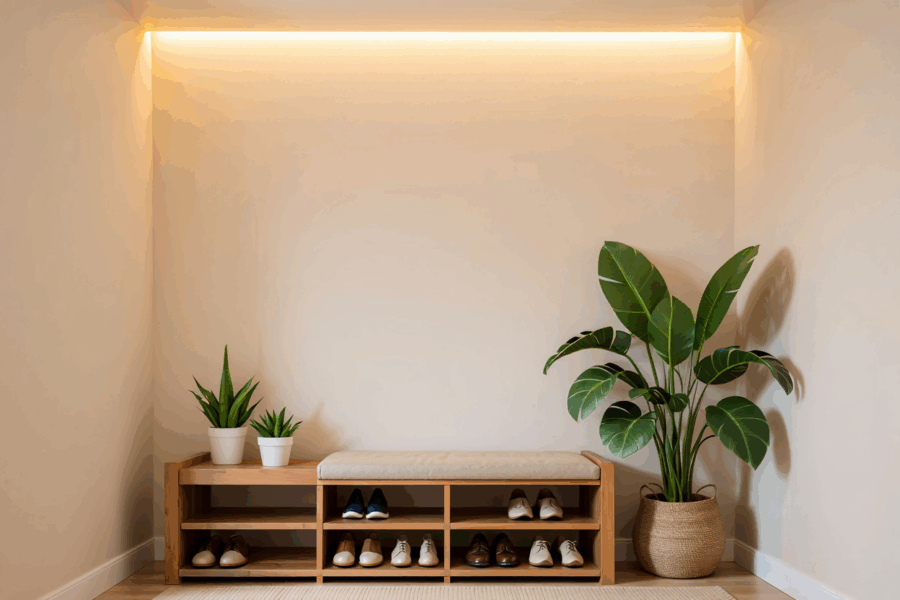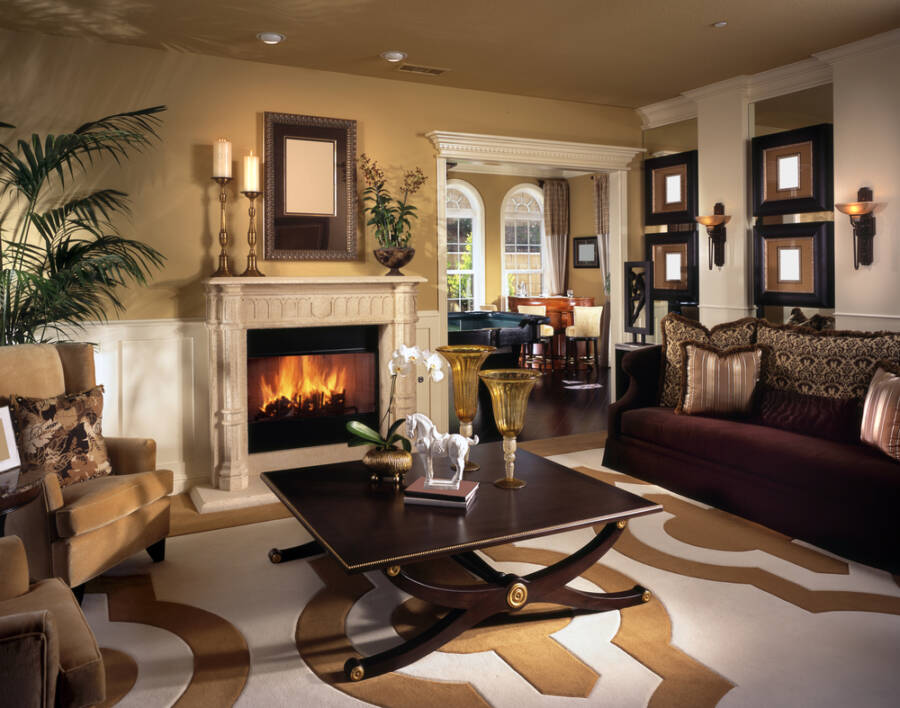Natural light is a very looked-after feature in homes that has the ability to create a warm, welcoming, and energizing atmosphere. However, not every room has a lot of natural sunlight. Dark spaces can often feel smaller and cramped, making it very difficult to create a vibrant and airy space. Luckily, you can fake natural light to make even the darkest rooms feel bright and inviting.
In this article, we’ll explore 10 creative ways to bring a sense of brightness to your home without relying only on windows and natural light sources.
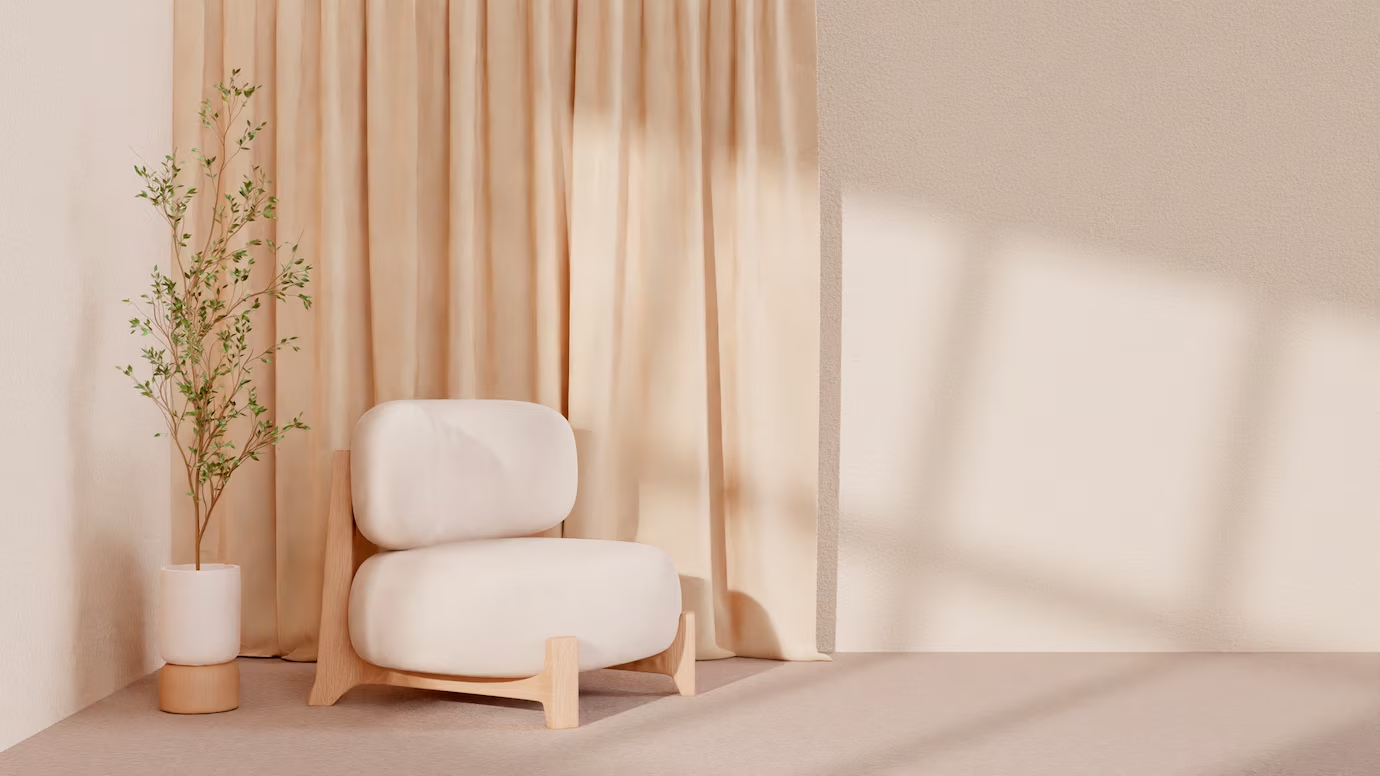
1. Use Light Colors for Walls
The first step in faking natural light in a dark room is to choose the right colors for the walls. Light-colored walls and ceilings will reflect more light, making the space feel more open. Whites, soft creams, pale pastels, and light grays are all great options to brighten up a room. You should avoid dark colors like deep blues, dark browns, or blacks, which all absorb light and can make the room feel smaller and more cramped.
When you choose paint finishes, pick matte or satin finishes for a more reflective surface. Glossy finishes can create glare, which might not always be necessary in a room that has limited natural light.
2. Install Reflective Surfaces
Using reflective materials in your room’s design can help bounce light around, making the space feel brighter and bigger. You should also use glossy finishes for furniture pieces like tables, cabinets, and shelves. A glass coffee table or a reflective metallic finish on your light fixtures can also create a sense of brightness by reflecting both natural and artificial light.
Another great option is using polished marble or quartz countertops, which not only add more sophistication to your space but also scatter light and brighten up the room.
3. Use Light-Colored Furniture and Fabrics
Just as the wall color plays a vital role in the brightness of the room, so does the furniture and fabric you choose. Dark-colored furniture can absorb light, leaving your space looking dull. Instead, you should use light-colored furniture in neutral tones, such as whites, beiges, or pale grays. You can also use lightweight fabrics like linen, cotton, and light wool because they will reflect light better than heavier materials like velvet or leather.
To maximize the effect, mix and match furniture in complementary light tones to create a cohesive and light look. You can even experiment with lighter wood finishes for items like shelves, tables, and chairs because these materials also reflect light and contribute to a brighter space.
4. Use Sheer Curtains or Blinds
Heavy, dark curtains can absorb natural light, making a room feel more enclosed. To maximize the amount of light that enters your space, choose sheer curtains or light fabric blinds. These will let natural light get filtered through while still giving you privacy. You should choose light colors like white, ivory, or soft pastels to keep the bright and airy feel.
If you’d like to have more control over the amount of light that enters your room, you should try to layer sheer curtains with blackout curtains or blinds. This will allow you to adjust the light levels throughout the day, depending on your needs.
5. Use Artificial Lighting That Mimics Daylight
One of the most important things to brighten up a room is to choose bulbs that mimic the qualities of natural light. Traditional bulbs will give you a warm, yellowish glow, which might not be good for a dark room. Instead, you should use LED or fluorescent bulbs that produce a cooler, daylight-like color temperature. Look for bulbs that have a color temperature of 5000K to 6500K, which resemble natural daylight.
Another useful tip is smart lighting, which allows you to adjust the color temperature and brightness to your needs. If you choose to use smart bulbs, you can create a natural ambiance during the day and evening.
6. Bring in Indoor Plants
Indoor plants are a fantastic way to add life and color to your room and to also improve the overall ambiance of the space. You should choose plants that thrive in lower light conditions, such as snake plants, pothos, and peace lilies. These plants can add a touch of nature to your room while still flourishing in places that have limited natural sunlight. N
Plants can also help to purify the air and create a calming and more cozy atmosphere. You should consider placing them in some decorative pots that match your room’s aesthetic. For even more impact, you can place different types and sizes of plants together to create a lush and natural focal point.
7. Use a Lot of Mirrors
Mirrors are one of the most practical tricks to enhance the natural light and create the illusion of a larger and brighter space. A mirror that is placed strategically can reflect both natural and artificial light, giving the room a sense of brightness and openness. A good tip is to place a large mirror across from a window to bounce sunlight deeper into the room. You can also use multiple smaller mirrors to amplify the light that you already have, especially when combined with other lighting tricks.
Mirrors that have decorative frames can be both functional and aesthetic improvements to your space. Whether you choose a sleek, modern design or a vintage frame, mirrors can elevate the overall look of your room while also helping to brighten it.
8. Use Light-Colored Flooring
Just as wall color and furniture influence the brightness of a room, so does the flooring., Dark hardwood or carpets can absorb light and create a cramped atmosphere. To brighten the room, you should install lighter-colored flooring options, like light oak, ash, or whitewashed wood. You can also choose to use light-colored tiles or vinyl flooring to create an open and airy feel.
If you’re not planning to replace your floors, you should use light-colored rugs or carpets to help reflect light and break up darker flooring. Rugs can also create texture and warmth, contributing to the ambiance of the room.
9. Install Skylights or Light Tubes
If you want to invest in a more permanent solution, installing skylights or light tubes can be a game changer for bringing natural light into a dark room. Skylights can be very effective in rooms that have sloped ceilings because they let sunlight enter directly into your space. On the other hand, light tubes are smaller and can funnel natural light from the roof into the room located below.
These solutions are a fantastic way to brighten up a space that has limited natural light. It is best to talk to a professional if you consider this option because proper installation is key to preventing leaks and ensuring energy efficiency.
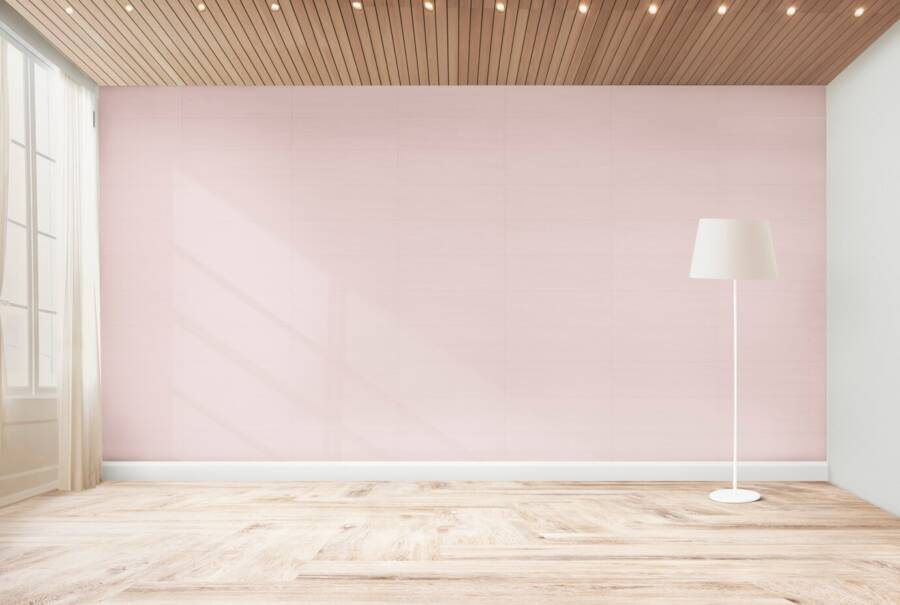
10. Keep the Windows Unobstructed
One of the simplest and most effective ways to get more natural light into your space is to make sure that your windows are not obstructed by anything. Heavy curtains or large plants can often block light from entering the room, making the space feel even darker than usual. Keep your windows clear of large items or objects that could cast shadows or destroy the normal flow of light.
You should place furniture further away from windows, especially tall pieces like bookshelves or cabinets. If you have heavy curtains, change them for lighter, sheer alternatives that let in as much natural light as possible. Another good tip is to clean your windows both inside and out to make sure that nothing is keeping the light from coming in.
Do you want to have a unique decor piece while also playing with the natural light in your room? We think you might like this suncatcher.
Read also: 10 Bold Colors That Fit PERFECTLY in California Homes

